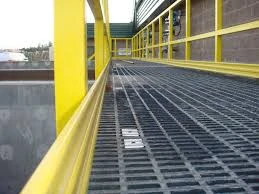
-
 Afrikaans
Afrikaans -
 Albanian
Albanian -
 Amharic
Amharic -
 Arabic
Arabic -
 Armenian
Armenian -
 Azerbaijani
Azerbaijani -
 Basque
Basque -
 Belarusian
Belarusian -
 Bengali
Bengali -
 Bosnian
Bosnian -
 Bulgarian
Bulgarian -
 Catalan
Catalan -
 Cebuano
Cebuano -
 China
China -
 China (Taiwan)
China (Taiwan) -
 Corsican
Corsican -
 Croatian
Croatian -
 Czech
Czech -
 Danish
Danish -
 Dutch
Dutch -
 English
English -
 Esperanto
Esperanto -
 Estonian
Estonian -
 Finnish
Finnish -
 French
French -
 Frisian
Frisian -
 Galician
Galician -
 Georgian
Georgian -
 German
German -
 Greek
Greek -
 Gujarati
Gujarati -
 Haitian Creole
Haitian Creole -
 hausa
hausa -
 hawaiian
hawaiian -
 Hebrew
Hebrew -
 Hindi
Hindi -
 Miao
Miao -
 Hungarian
Hungarian -
 Icelandic
Icelandic -
 igbo
igbo -
 Indonesian
Indonesian -
 irish
irish -
 Italian
Italian -
 Japanese
Japanese -
 Javanese
Javanese -
 Kannada
Kannada -
 kazakh
kazakh -
 Khmer
Khmer -
 Rwandese
Rwandese -
 Korean
Korean -
 Kurdish
Kurdish -
 Kyrgyz
Kyrgyz -
 Lao
Lao -
 Latin
Latin -
 Latvian
Latvian -
 Lithuanian
Lithuanian -
 Luxembourgish
Luxembourgish -
 Macedonian
Macedonian -
 Malgashi
Malgashi -
 Malay
Malay -
 Malayalam
Malayalam -
 Maltese
Maltese -
 Maori
Maori -
 Marathi
Marathi -
 Mongolian
Mongolian -
 Myanmar
Myanmar -
 Nepali
Nepali -
 Norwegian
Norwegian -
 Norwegian
Norwegian -
 Occitan
Occitan -
 Pashto
Pashto -
 Persian
Persian -
 Polish
Polish -
 Portuguese
Portuguese -
 Punjabi
Punjabi -
 Romanian
Romanian -
 Russian
Russian -
 Samoan
Samoan -
 Scottish Gaelic
Scottish Gaelic -
 Serbian
Serbian -
 Sesotho
Sesotho -
 Shona
Shona -
 Sindhi
Sindhi -
 Sinhala
Sinhala -
 Slovak
Slovak -
 Slovenian
Slovenian -
 Somali
Somali -
 Spanish
Spanish -
 Sundanese
Sundanese -
 Swahili
Swahili -
 Swedish
Swedish -
 Tagalog
Tagalog -
 Tajik
Tajik -
 Tamil
Tamil -
 Tatar
Tatar -
 Telugu
Telugu -
 Thai
Thai -
 Turkish
Turkish -
 Turkmen
Turkmen -
 Ukrainian
Ukrainian -
 Urdu
Urdu -
 Uighur
Uighur -
 Uzbek
Uzbek -
 Vietnamese
Vietnamese -
 Welsh
Welsh -
 Bantu
Bantu -
 Yiddish
Yiddish -
 Yoruba
Yoruba -
 Zulu
Zulu
Feb . 10, 2025 09:36
Back to list
fiberglass 90 degree elbow
Navigating the world of industrial fittings can be challenging, especially when it comes to selecting components that deliver on performance, longevity, and safety. The fiberglass 90-degree elbow stands out as a pivotal component for various applications, offering unique benefits that set it apart from other materials.
Professionals in industries such as chemical processing and power generation frequently rely on fiberglass elbows for their pipelines due to their authority in performance. When installed correctly, these elbows provide exceptional flow dynamics, minimizing pressure loss and turbulence, which enhances the overall efficiency of the system. Additionally, their lightweight nature makes them easier to handle and install, reducing labor costs and installation time compared to heavier metal alternatives. Trustworthiness in the use of fiberglass 90-degree elbows is cemented by numerous case studies and user testimonials highlighting their durability and performance in long-term applications. Companies often report a significant reduction in maintenance issues and an impressive return on investment due to the reduced need for replacements or repairs. Furthermore, the environmental benefits of using fiberglass, such as reduced emissions during manufacturing and the extended lifecycle of the product, support corporate sustainability goals. Selecting the right fiberglass 90-degree elbow involves considering factors such as pressure ratings, pipeline dimensions, and the nature of the transported media. Consulting with experts and manufacturers who specialize in composite materials is advisable to ensure the best fit for your specific needs. Engaging with these professionals not only enhances the trustworthiness of the installation but also ensures compliance with industry regulations and standards. In conclusion, the fiberglass 90-degree elbow emerges as a cornerstone component in industrial piping systems. Its unique blend of durability, performance, and safety makes it an invaluable asset across numerous sectors. As industries continue to innovate and demand more sustainable and efficient solutions, the role of fiberglass fittings will undoubtedly grow, further solidifying their place in modern engineering solutions.


Professionals in industries such as chemical processing and power generation frequently rely on fiberglass elbows for their pipelines due to their authority in performance. When installed correctly, these elbows provide exceptional flow dynamics, minimizing pressure loss and turbulence, which enhances the overall efficiency of the system. Additionally, their lightweight nature makes them easier to handle and install, reducing labor costs and installation time compared to heavier metal alternatives. Trustworthiness in the use of fiberglass 90-degree elbows is cemented by numerous case studies and user testimonials highlighting their durability and performance in long-term applications. Companies often report a significant reduction in maintenance issues and an impressive return on investment due to the reduced need for replacements or repairs. Furthermore, the environmental benefits of using fiberglass, such as reduced emissions during manufacturing and the extended lifecycle of the product, support corporate sustainability goals. Selecting the right fiberglass 90-degree elbow involves considering factors such as pressure ratings, pipeline dimensions, and the nature of the transported media. Consulting with experts and manufacturers who specialize in composite materials is advisable to ensure the best fit for your specific needs. Engaging with these professionals not only enhances the trustworthiness of the installation but also ensures compliance with industry regulations and standards. In conclusion, the fiberglass 90-degree elbow emerges as a cornerstone component in industrial piping systems. Its unique blend of durability, performance, and safety makes it an invaluable asset across numerous sectors. As industries continue to innovate and demand more sustainable and efficient solutions, the role of fiberglass fittings will undoubtedly grow, further solidifying their place in modern engineering solutions.
Next:
Related Products









